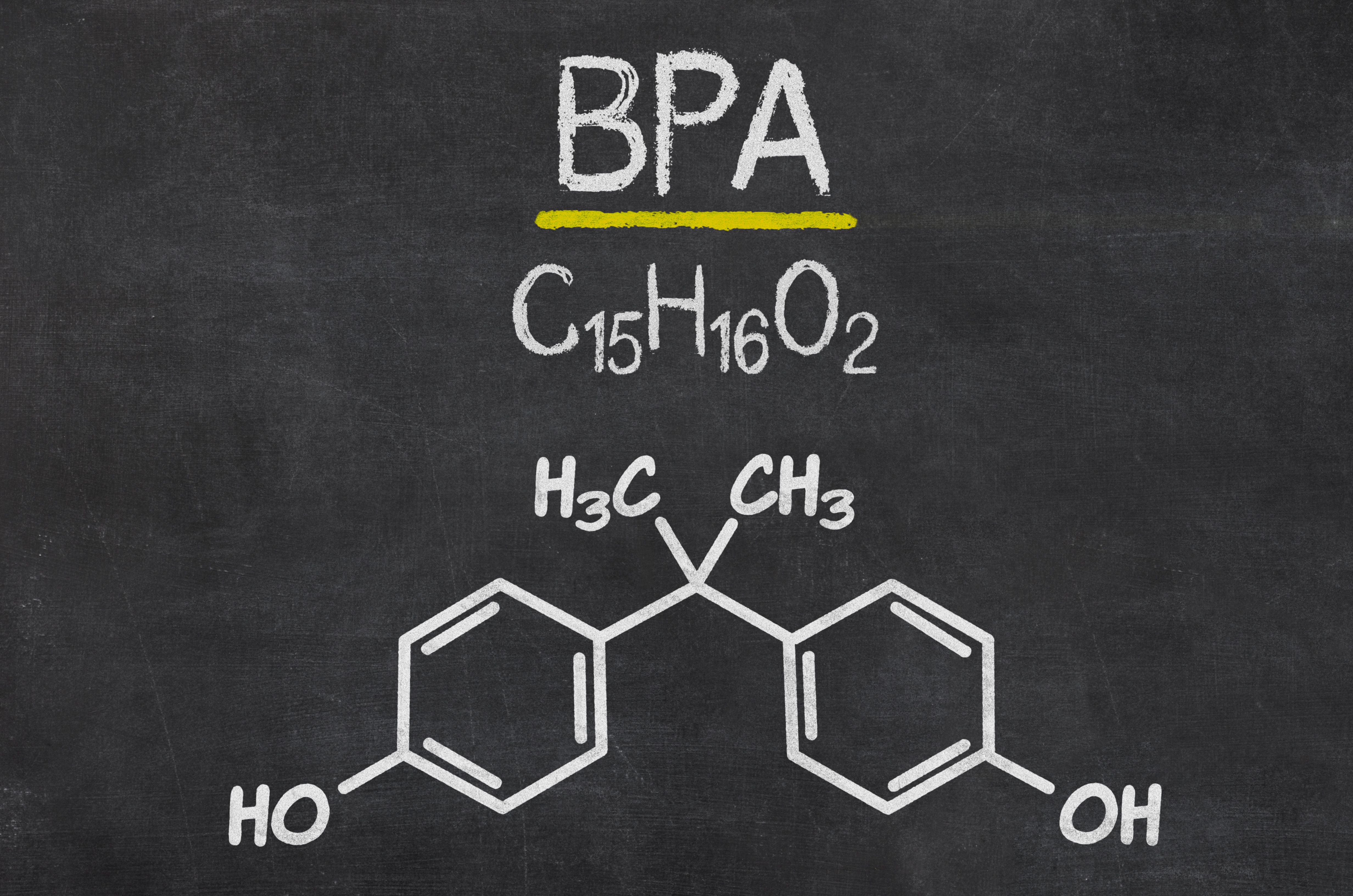pH-Responsive Deep Eutectic Solvent Enables Accurate Bisphenol A Detection in Water
This experiment introduced a deep eutectic solvent developed in conjunction with a pH-induced phase transition combined with high performance liquid chromatography (HPLC) for efficient trace determination of bisphenol A (BPA) in water samples.
According to a recent study published in the Journal of Separation Science by Lili Cao and Yukaidi Li, researchers at Heilongjiang Bayi Agricultural University in Daqing, China, a novel approach employing pH-responsive deep eutectic solvent (DES) combined with high performance liquid chromatography (HPLC) has been developed for the separation, preconcentration, and determination of bisphenol A (BPA) in water samples (1).
Schiefertafel mit der chemischen Formel von BPA | Image Credit: © Zerbor - stock.adobe.com

BPA, or bisphenol A, is a chemical found in the environment, some plastics and food containers that has been linked to potential health risks. Studies suggest that exposure to BPA may be associated with hormone disruption and an increased risk of certain health issues, including reproductive, prostate, and fetus developmental problems.
The study focuses on the synthesis and characterization of DES, created using thymol as the hydrogen bond acceptor and various carbon carboxylic acids as the hydrogen bond donor. The resulting five DESs were utilized as the extraction solvent for BPA, which is a chemical compound produced in mass quantities primarily for use in polycarbonate plastic construction. This study’s method capitalizes on pH-induced phase transition, enabling efficient analyte extraction through a combination of alkalinization and acid addition.
Optimization of several crucial parameters was conducted to enhance the efficiency of the extraction process. These parameters include the type of DES, molar ratio of DES components, DES volume, potassium hydroxide concentration, hydrochloric acid volume, extraction time, and salt addition. Under the optimized conditions, the method demonstrated excellent intra- and interday precisions, with relative standard deviations of 2.2% and 4.3%, respectively, based on seven replicate measurements of 10 μg/L of BPA in water samples.
The developed method exhibited a linear response over a concentration range of 0.05–50 μg/L, with a low detection limit of 0.02 μg/L. This sensitivity allowed for accurate detection of trace amounts of BPA in water. To validate the accuracy of the method, the researchers spiked different concentrations of BPA into real water samples, obtaining relative recoveries in the range of 92.5%−105.2%.
The significance of this research lies in the advancement of a pH-responsive DES-based microextraction technique for the determination of bisphenol A. The method offers a reliable and efficient approach to address the challenges associated with trace analysis of this environmental contaminant in water samples. The use of DES enhances the selectivity and sensitivity of the extraction process, contributing to the accurate quantification of BPA.
The implications of this research extend to environmental monitoring and water quality assessment, where the precise detection of contaminants such as BPA is crucial for ensuring the safety of water resources. The combination of pH-responsive DES and HPLC provides a robust analytical tool that can be applied in various water monitoring scenarios, supporting the efforts to maintain and improve the quality of water supplies.
This study adds to the growing body of research exploring innovative approaches for environmental analysis, showcasing the potential of pH-responsive deep eutectic solvents in enhancing the efficiency and accuracy of trace determination methods for water contaminants.
This article was written with the help of artificial intelligence and has been edited to ensure accuracy and clarity. You can read more about our policy for using AI here.
Reference
(1) Cao, L.; Li, Y. Synthesis and Characterization of pH-Responsive Deep Eutectic Solvent Followed by HPLC for Trace Determination of Bisphenol A in Water Samples. J. Sep. Sci. 2023, e2300776. DOI: 10.1002/jssc.202300776
Advances in Non-Targeted Analysis for PFAS in Environmental Matrices
March 27th 2025David Megson from Manchester Metropolitan University in Manchester, UK, spoke to LCGC International about the latest developments in non-targeted analysis (NTA) of per- and polyfluoroalkyl substances (PFAS) in environmental matrices based on a recent systematic review paper he has collaboratively published (1).
Study Explores Thin-Film Extraction of Biogenic Amines via HPLC-MS/MS
March 27th 2025Scientists from Tabriz University and the University of Tabriz explored cellulose acetate-UiO-66-COOH as an affordable coating sorbent for thin film extraction of biogenic amines from cheese and alcohol-free beverages using HPLC-MS/MS.







